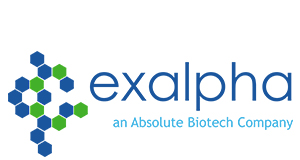Mouse anti Human CD3 FITC - CD44 PE
Mouse anti Human CD3 FITC - CD44 PE, Polyclonal
Artikelnummer
EXAB344
Verpackungseinheit
100 Tests
Hersteller
Exalpha Biologicals Inc
Verfügbarkeit:
wird geladen...
Preis wird geladen...
Background: The CD3 epitope is expressed on the epsilon chain of the CD3/T cell antigen receptor (TcR) complex. CD3 is present on 65-85% of thymocytes and has a mitogenic effect on peripheral blood T cells. Indentification of human T cells expressing the 22-28,000 M.W. surface antigen. CD44 is a 90kD (GP90), collagen-binding, membrane glycoprotein, termed extracellular matrix receptor III (ECMR III), that is homologous to the lymphocyte homing receptor and CD44 antigen. CD44 is abundantly expressed in many epithelial tissues, and is localized predominantly to filopodia in cultured keratinocytes. CD44 is a polymorphic family of related membrane proteoglycans and glycoproteins possessing extensive diversity in both glycosylation and core protein sequence. Human neonatal foreskin keratinocytes (HFKs) and QG56 lung squamous carcinoma cells express an alternatively spliced form of the CD44 core protein (termed CD44E) that contains an additional 132 amino acids in the carbohydrate attachment region of the extracellular domain. HFKs, HT1080 fibrosarcoma and QG56 cells, as well as many other human cells, contain varying ratios of GP90. Differences in mass are due primarily to variation in carbohydrate moieties, including sulfated aspargine-linked glycopeptides (GP), chondroitin sulfate (CS), and heparan sulfate (HS) glycosaminoglycans, as well as O-linked mucin and polylactosamine structure(s).
Immunogen: CD3=Derived from the hybridization of mouse NS-1 myeloma celss with spleen cells from BALB/c mice immunized with human thymocytes. CD44=Derived from the hybridization of mouse Sp2/0 myeloma cells with spleen cells from BALB/c mice immunized with TCR-gamma epsilon thymocytes.
Purification Method: Protein A/G Chromatography.
Formulation: Provided as solution in phosphate buffered saline with 0.08% sodium azide and 0.2% carrier protein.
References: 1. Knowles RW. Immunochemical analysis of the T cell-specific antigens. In : Reinhert EL, Haynes BF, Nadl LM and Bernstein ID. eds. Leukocyte Typing II, Human T Lymphocytes. New York, NY: Springer-Verlag; 1986:259
2. Kurrle R. Cluster Report:CD3. In:Knapp W, Dorken B, Gilks WR, Reiber EP, Schmidt RE, Stein H, and von dem Borne AEG Kr, eds. Leukocyte Typing IV, White cell Differentation Antigens. Oxford, England: Oxford Press 1989:293
3. Signal transduction via CD4,CD8 and CD28 in mature and immature thymocytes. Implications for thymic selection. Turka LA, Linsley PS, Paine R 3d, Schieven Gl, Thompson GB, Ledbetter JA, J. Immunol. 1991 Mar :146(5): 1428-36
4. T cell receptor/CD3-signaling induces death by apoptosis in human T cell receptor gamma delta + Tcells. Janssen O, Wesselborg S, Heckl-Ostreicher B, Pechhold K, Bender A, Schondelmaier S, Moldenhauer G, Kabelitz D I Immunol. 1991 Jan146(1):35-9
5. Clonal analysis of human CD4-CD8-CD3- thymocytes highly purified from postnatal thymus Hori T, Spits H J. Immunol. 1991 Apr 146(7):2116-21
6. Molecular cloning of the CD3 zeta subunit identifies a CD3 zeta-related product in thymus-derived cells Jin YJ, Claton LK, Howard FD, Koyasu S, Sieh M, Steinbrich R, Tarr GE, Reinherz EL. Proc Natl Acad Sci usa 1990 Ma: 87(9):3319-23
7. Generation of Monoclonal Antibodies to a Human Natural Killer Clone. Characterization of Two Natural Killer-Associated Antigens, NKH1 and NKH2, Expressed on Subset of Large Granular Lymphocytes. Hercend T, Griffin JD, Benussan A, Schmidt RE, Edson MA, Brennen A, Murray C, Daley JF, Schlossman SF, and Ritz, J, J. Clin. Invest. 1985 75:932
8. Shedding of the CD44 adhesion molecule from leukocytes induced by anti-CD44 monoclonal antibody simulating the effect of a natural receptor ligand. Bazil V; Horejsi V J Immunol 1992 Aug 1;149(3):747-53
9. Requirements for hyaluronic acid binding by CD44: a role for the cytoplasmic domain and activation by antibody. Lesley J; He Q; Miyake K; Hamann A; Hyman R; Kincade PW J Exp Med 1992 Jan 1;175(1):257-66
10. Variations in the cytoskeletal interaction and posttranslational modification of the CD44 homing receptor in macrophages. Camp RL; Kraus TA; Pure E Cell Biol 1991 Dec;115(5):1283-92
11. Distinct effects of two CD44 isoforms on tumor growth in vivo. Sy MS; Guo YJ; Stamenkovic I J Exp Med 1991 Oct 1;174(4):85966
12. Participation in normal immune responses of a metastasis-inducing splice variant of CD44 [see comments] Arch R; Wirth K; Hofmann M; Ponta H; Matzku S; Herrlich P; Zoller Comment in: Science 1992 Jul 31;257(5070):614 Science 1992 Jul 31;257(5070):682-5
13. Cytokine production by mature and immature CD4-CD8- T cells. Alpha beta-T cell receptor+ CD4-CD8- T cells produce IL-4. Zlotnik A; Godfrey DI; Fischer M; Suda T J Immunol 1992 Aug 15;149(4):1211-5
14. Inhibition of tumor growth in vivo with a soluble CD44-immunoglobulin fusion protein. Sy MS; Guo YJ; Stamenkovic I J Exp Med 1992 Aug 1;176(2):623-7.
UniProt: P07766, P16070.
Caution: This product is intended FOR RESEARCH USE ONLY, and FOR TESTS IN VITRO, not for use in diagnostic or therapeutic procedures involving humans or animals.
Immunogen: CD3=Derived from the hybridization of mouse NS-1 myeloma celss with spleen cells from BALB/c mice immunized with human thymocytes. CD44=Derived from the hybridization of mouse Sp2/0 myeloma cells with spleen cells from BALB/c mice immunized with TCR-gamma epsilon thymocytes.
Purification Method: Protein A/G Chromatography.
Formulation: Provided as solution in phosphate buffered saline with 0.08% sodium azide and 0.2% carrier protein.
References: 1. Knowles RW. Immunochemical analysis of the T cell-specific antigens. In : Reinhert EL, Haynes BF, Nadl LM and Bernstein ID. eds. Leukocyte Typing II, Human T Lymphocytes. New York, NY: Springer-Verlag; 1986:259
2. Kurrle R. Cluster Report:CD3. In:Knapp W, Dorken B, Gilks WR, Reiber EP, Schmidt RE, Stein H, and von dem Borne AEG Kr, eds. Leukocyte Typing IV, White cell Differentation Antigens. Oxford, England: Oxford Press 1989:293
3. Signal transduction via CD4,CD8 and CD28 in mature and immature thymocytes. Implications for thymic selection. Turka LA, Linsley PS, Paine R 3d, Schieven Gl, Thompson GB, Ledbetter JA, J. Immunol. 1991 Mar :146(5): 1428-36
4. T cell receptor/CD3-signaling induces death by apoptosis in human T cell receptor gamma delta + Tcells. Janssen O, Wesselborg S, Heckl-Ostreicher B, Pechhold K, Bender A, Schondelmaier S, Moldenhauer G, Kabelitz D I Immunol. 1991 Jan146(1):35-9
5. Clonal analysis of human CD4-CD8-CD3- thymocytes highly purified from postnatal thymus Hori T, Spits H J. Immunol. 1991 Apr 146(7):2116-21
6. Molecular cloning of the CD3 zeta subunit identifies a CD3 zeta-related product in thymus-derived cells Jin YJ, Claton LK, Howard FD, Koyasu S, Sieh M, Steinbrich R, Tarr GE, Reinherz EL. Proc Natl Acad Sci usa 1990 Ma: 87(9):3319-23
7. Generation of Monoclonal Antibodies to a Human Natural Killer Clone. Characterization of Two Natural Killer-Associated Antigens, NKH1 and NKH2, Expressed on Subset of Large Granular Lymphocytes. Hercend T, Griffin JD, Benussan A, Schmidt RE, Edson MA, Brennen A, Murray C, Daley JF, Schlossman SF, and Ritz, J, J. Clin. Invest. 1985 75:932
8. Shedding of the CD44 adhesion molecule from leukocytes induced by anti-CD44 monoclonal antibody simulating the effect of a natural receptor ligand. Bazil V; Horejsi V J Immunol 1992 Aug 1;149(3):747-53
9. Requirements for hyaluronic acid binding by CD44: a role for the cytoplasmic domain and activation by antibody. Lesley J; He Q; Miyake K; Hamann A; Hyman R; Kincade PW J Exp Med 1992 Jan 1;175(1):257-66
10. Variations in the cytoskeletal interaction and posttranslational modification of the CD44 homing receptor in macrophages. Camp RL; Kraus TA; Pure E Cell Biol 1991 Dec;115(5):1283-92
11. Distinct effects of two CD44 isoforms on tumor growth in vivo. Sy MS; Guo YJ; Stamenkovic I J Exp Med 1991 Oct 1;174(4):85966
12. Participation in normal immune responses of a metastasis-inducing splice variant of CD44 [see comments] Arch R; Wirth K; Hofmann M; Ponta H; Matzku S; Herrlich P; Zoller Comment in: Science 1992 Jul 31;257(5070):614 Science 1992 Jul 31;257(5070):682-5
13. Cytokine production by mature and immature CD4-CD8- T cells. Alpha beta-T cell receptor+ CD4-CD8- T cells produce IL-4. Zlotnik A; Godfrey DI; Fischer M; Suda T J Immunol 1992 Aug 15;149(4):1211-5
14. Inhibition of tumor growth in vivo with a soluble CD44-immunoglobulin fusion protein. Sy MS; Guo YJ; Stamenkovic I J Exp Med 1992 Aug 1;176(2):623-7.
UniProt: P07766, P16070.
Caution: This product is intended FOR RESEARCH USE ONLY, and FOR TESTS IN VITRO, not for use in diagnostic or therapeutic procedures involving humans or animals.

 English
English







